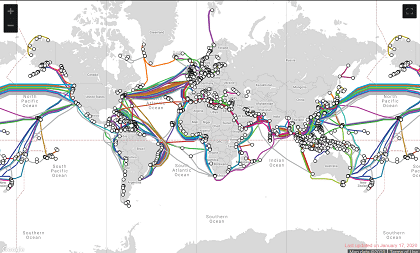While the Engineering Institute of Technology has campuses in Perth, Western Australia, and Melbourne, Victoria, we predominantly run as an online institute that sees thousands of students logging in and out every day. For students who are part of our online learning cohort, internet connectivity is imperative.
We are proud to have students from all over the world who have earned Australian accredited diplomas and degrees through our unique online delivery model. We are, however, aware of the challenges many countries face with limited internet connectivity.

In 2017, the United Nations (UN) reported that more than half of the world’s population still does not have access to the internet, with Asia and Africa facing the lowest connection rate. It has now set a goal for universal access to the internet — which would equate to 90 percent of the world population — by 2050.
Facebook and Amazon have been experimenting with the research and development of internet-for-all technologies. Engineers are deeply involved in how nations connect to the internet. While philanthropic companies undertake the challenge of creating new, still-to-be-debuted, mobile internet technologies, the tech that connects the world to the internet has its fair share of maintenance issues.
How is the internet provided to the world?
Ninety-nine percent of international internet data is transmitted through a series of submarine cables spread across the ocean floor across the globe. There are 300 undersea cables transmitting data underwater, ensuring nations get internet connectivity.
However, when these connections become damaged, the internet traffic from the directly affected countries is rerouted through working cables. This impacts speed and accessibility.
For example, on the west coast of Africa, the West Africa Cable System (WACS) and South Atlantic 3 (SAT3) form international links that connect southern Africa to the world.
WACS connects South Africa with the United Kingdom. The SAT3 cable connects South Africa to Portugal and Spain. Both of these cables were damaged by gale winds earlier this year, impacting the entire collection of southern African internet service providers.

On the east coast of Africa, the SEACOM and EASSy cables are receiving rerouted international internet traffic from the western parts of the country where the cables are down.
This meant internet service providers had to continue buying international bandwidth from SEACOM to keep international traffic ticking along for their consumers.
The future of internet connectivity
Are undersea cables set to be the norm for internet connectivity a century from now? Is South Africa’s cautionary tale of gale-force winds and broken undersea cables enough food-for-thought for engineers to come up with more innovative ways of connecting the world to the internet?
Some internet service providers in southern Africa offer competitively priced high-speed satellite internet. Satellite internet is useful, especially in rural areas that do not have fixed and wireless internet infrastructure. South African born Elon Musk’s aerospace company SpaceX, has recently launched a satellite network named Starlink that will help provide low-cost internet to remote locations.
The U.S. Federal Communications Commission (FCC) has given the company clearance to launch 12,000 small satellites and may allow them to push the number to 42,000 in the future. Around 242 satellites are already in space. Ongoing research and development of internet technologies, such as SpaceX’s Starlink, are going to have to go into hyperdrive to meet the UN’s target of 90% of the earth’s population being connected by 2050.
Works Cited
“Africa Internet Users, 2019 Population and Facebook Statistics.” Internet World Stats, www.internetworldstats.com/stats1.htm.
Mann, Adam. “Starlink: SpaceX’s Satellite Internet Project.” Space.com, Space, 17 Jan. 2020, www.space.com/spacex-starlink-satellites.html.


